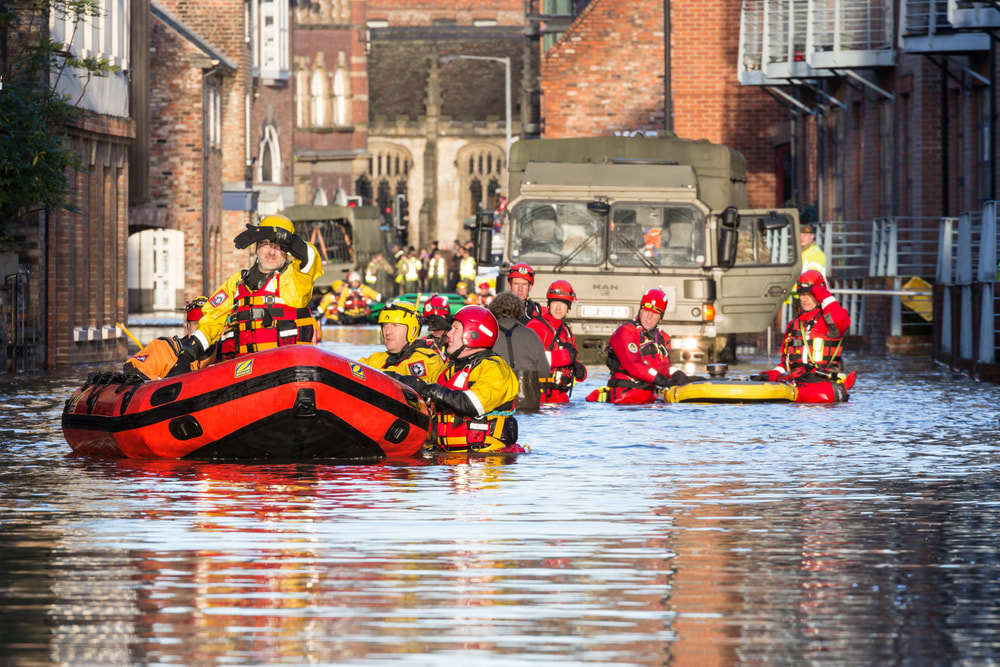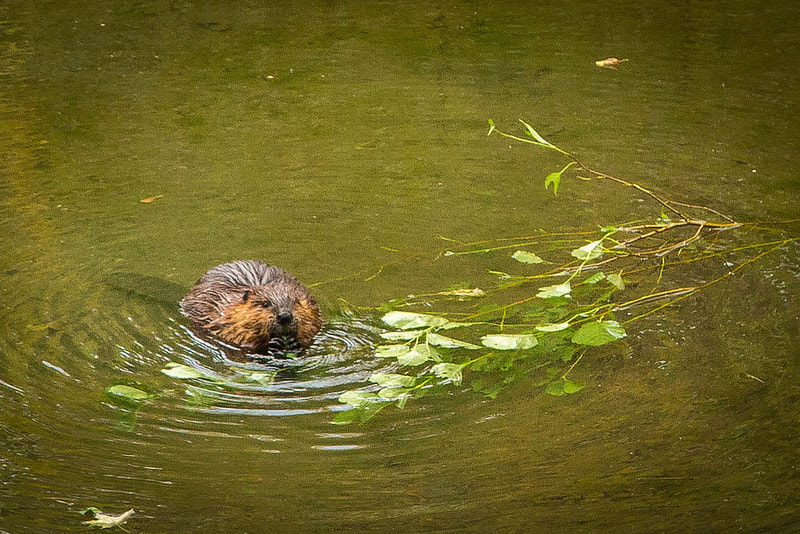How modern flooding can be solved with Ecological landscape design and Sustainable landscaping.8/9/2017 Britain has seen record rainfall in the last few years resulting in catastrophic flooding which has cost millions of pounds to insurance companies and the UK tax payer. With trends in global warming resulting in more predicted heavy rainfall is it time to rethink our flooding & landscape strategy? Many physical engineered flood barrier systems have added to the costs of these now familiar biblical flooding events with towns and cities still suffering significant floods and this is a typical modern scenario of man trying to fight nature instead of working alongside it. The truth is sustainable landscape architecture has had the solutions for this for many years! All rivers and water courses have a source which is a drainage point two the water catchment or basin. The topography of a region combined with the ability of the landscape to absorb excess storm water will decided whether an area will flood an where a flood will take place. There are three main reasons the UK has had increased flooding in recent times: intensive agriculture, increased rainfall due to rising global temperatures and the planning of our towns and cities. In the past one hundred years our agricultural landscape has changed dramatically. The mechanical age has resulted in large areas of wetland being drained for farming. Tapestries of small farms encompassed by hedgerows with varying uses as nut orchards and hay meadows have been flattened to make way for big commercial agriculture. Indeed if you cast your eye over much of agricultural Britain you will see expanses of open fields with very little else. A combination of varying land use, forested uplands, natural wetlands along river courses and a more vegetated countryside in general would allow the landscape to absorb and retain storm water in times of heavy rain. The small farms across the country would all have at least one large pond for livestock to drink. Farm ponds like these retained water within the landscape and seasonally flooding meadows and wetlands absorbed water which now runs into rivers and floods developments. It is quite obvious that recent industrial times are warming the planet we are already a whole degree warmer than before industrialisation and winters have been noticeably wilder in very recent times. As winters have got milder summers have become wetter with warm humid air creating heavy precipitation throughout the season. As our climate continues to rise heavy rainfall patterns look to become more and more common. One of our biggest design flaws is our attempt to suppress natural process within our urban development’s channelling natural watercourses into concrete strait jackets which burst at the seams and turn into dangerous rapids during heavy rain. Block after block of urban development increases surface runoff into narrow pipes and channels feeding into the same tight water sewers which are already full causing them to burst their banks and flood surrounding developments. As our urban drainage networks are already stretched when prolonged periods of heavy rain arrive the potential for displacement of thousands of people and insurance claims in the millions becomes a quick reality. Ecological landscape design and sustainable landscape principles always aim to work with the natural process of the environment. When planning new towns and Cities rivers and green corridors through the landscape should be enhanced as green highways through the city allowing for cycling, walking and pleasure. The green river corridors should be designed in away the parklands on either sides can seasonally flood in times of heavy rain. Not only can these green ribbons through the city absorb flood water they can also be an opportunity to grow food and watch wildlife. Green roofs are an underestimated tool in the quest to reduce surface run of in our towns and cities the reduced run off from vegetated roofs or any green space in the city for that matter can dramatically reduce flooding in urban environments. Car parks and roads are another issue in surface run off in towns, not only is storm water carried quickly into the drainage network dangerous toxic metals and salts from these pollute surface run off which flows into our rivers poisoning wildlife and the water cycle. Using sustainable landscape urban drainage road run off can be channelled into seasonally flooded wetlands in adjacent landscaped parks. Wetland plants in these retention ponds can filter these toxins out of the water in an ecological way. Drainage retention ponds also encourage wildlife helping to increase biodiversity. Using this kind of naturalistic ecological landscaping in public parks we can do much to reduce flooding, purify toxins and increase the health of our neighbourhoods for people and wildlife. As surface run off is one of the biggest contributors to urban flash flooding permeable surfacing should be used where ever possible. Good examples of these are rubber safety surfaces in playgrounds and resin bound aggregates. In terms of regional ways to reduce flooding and slow down water flows across larger catchments and basins there is one major solution. Restore naturalistic seasonal flooding wetland habitats to lowland areas. This will both encourage wildlife and retain storm water naturally. Even the vegetation types of wetlands such as reed beds enable a greater absorption of fast flowing water from heavy rain. These can be further improved for flood prevention by creating overflow areas consisting of dry seasonally flooding depressions in the landscape planted with water loving species. Rewilding mountainous and upland areas can do much in reducing flooding in lowland areas. Primarily this comes from planting more trees and having more vegetation in general. Once again one aspect of ecological landscaping and design benefits multiple environmental factors. More vegetated naturalistic environments increase biodiversity, can produce food, provide recreation, sequester carbon from the atmosphere and reduce flooding alike. Sustainable landscaping is recognising the environments natural processes and working with them to find solutions for both wildlife and people into the future. With intelligent ecological design and sustainable landscaping we can make urban flooding a thing of the past and a greener, wilder more productive countryside.
0 Comments
Leave a Reply. |
AuthorPaul Nicolaides is a landscape Architect from North London and Director of Ecospaces Limited ecological Landscape design & build contractors. His ambition is to help accelerate change to a more sustainable ecological society. A society that plans its urban environments integrating agriculture, wildlife habitat, natural processes, recycling, industry, and sustainable urban drainage. Above all Paul aims to integrate these disciplines and realise there compatibility both on a local and landscape level. Archives
July 2018
Categories |
Photos from Tauralbus, Kurayba, ChodHound, tristanloper, scott1346, Sustainable sanitation, RobBixbyPhotography, The hills are alive*, Bobby McKay., ell brown, ncwetlands.org, Drantcom, alh1, Verokark, U.S. Embassy New Delhi, John Brighenti, umseas, wuestenigel, nestor galina, Sander van Dijk, mikecogh, oatsy40, foundin_a_attic, ndrwfgg, The Garden Smallholder, Aaron Volkening, wallygrom, Sander van Dijk, Base Camp Baker, Local Food Initiative, Kansas Poetry (Patrick), blachswan, infomatique, Phil Roeder, aschutz57








 RSS Feed
RSS Feed
